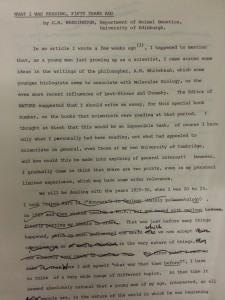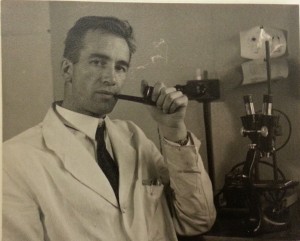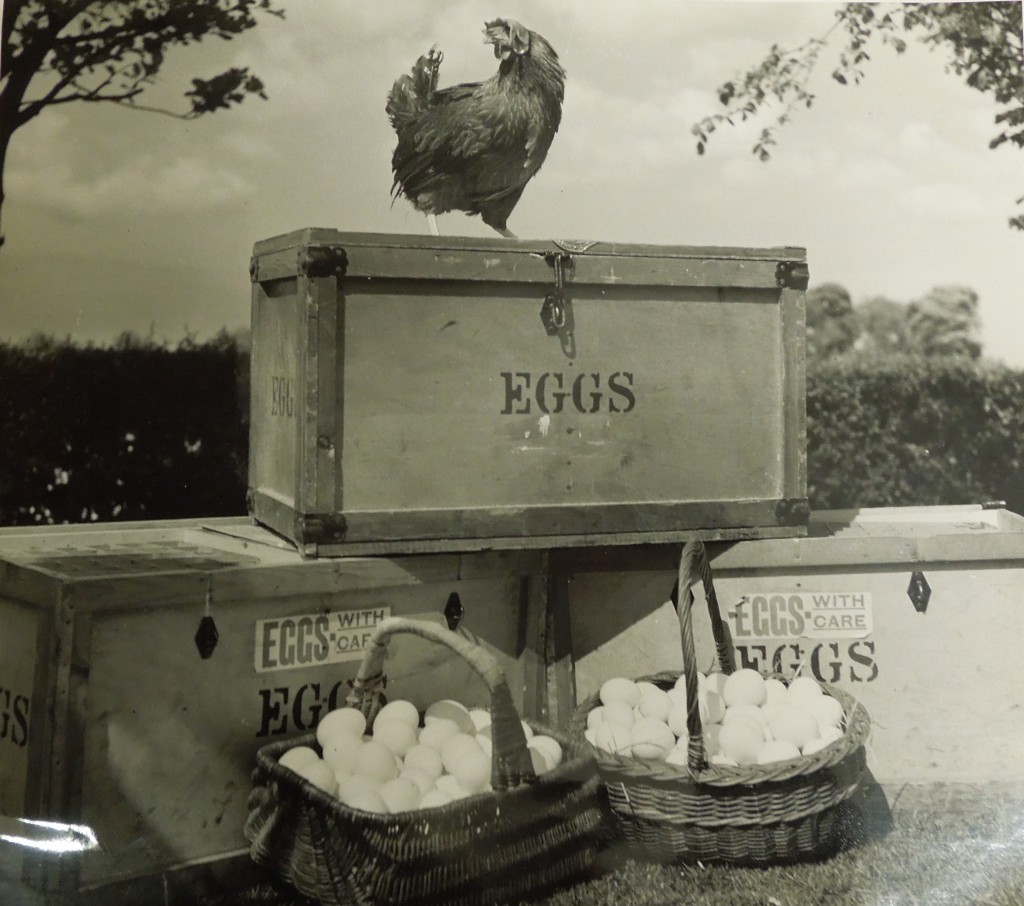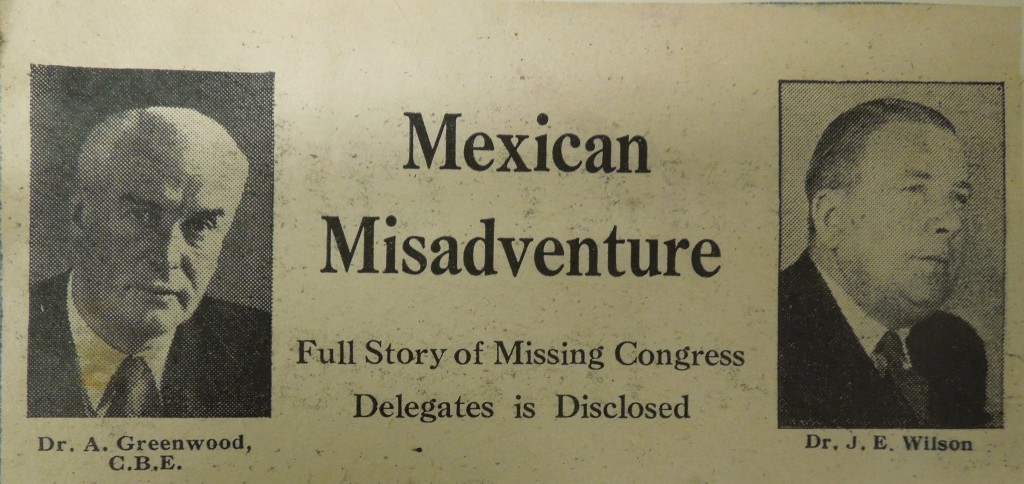 This Friday 25 April is ‘DNA Day’, an international celebration of the day in 1953 when James Watson, Francis Crick, Maurice Wilkins, Rosalind Franklin and colleagues at Cavendish Laboratory, Cambridge, announced the discovery of the famous ‘double-helix’ structure of DNA. I thought this would be a good opportunity to look at some of the Watson and Crick-related material in the ‘Towards Dolly’ collections.
This Friday 25 April is ‘DNA Day’, an international celebration of the day in 1953 when James Watson, Francis Crick, Maurice Wilkins, Rosalind Franklin and colleagues at Cavendish Laboratory, Cambridge, announced the discovery of the famous ‘double-helix’ structure of DNA. I thought this would be a good opportunity to look at some of the Watson and Crick-related material in the ‘Towards Dolly’ collections.
The C.H. Waddington collection contains a copy (GB 237 Coll-41/5/4/2) of Waddington’s review of James Watson’s book The Double Helix (Weidenfeld & Nicolson, 1968). Titled ‘Riding High on a Spiral’ and published in the Sunday Times, 28 May 1968, Waddington compares DNA to playing ‘a role in life rather like that played by the telephone directory in the social life of London: you can’t do anything much without it, but, having it, you need a lot of other things – telephones, wires and so on – as well’ and discusses the importance of Watson, Crick et al’s discovery in the wider context of the life sciences. However, he expresses concern at the purely intellectual and abstract nature of Watson’s work, with little practical familiarity with experimental material: ‘There is no evidence in the book that Jim Watson had ever seen any DNA, let alone started with ten pounds of liver, or whatever, and prepared it. It’s as though one wrote an account of the life of a musician who never did any practice.’
Waddington was certainly not one to mince his words, either in public reviews or private correspondence. This can also be seen in his 1974 correspondence (ref: GB 237 Coll-41/5/3/2) with Francis Crick, who was at this time working in the MRC Laboratory of Molecular Biology in Cambridge. What is particularly interesting about this correspondence is the spirited intellectual discussion – and disagreement – between the two scientists. Crick wrote to Waddington on 6 June 1974 asking Waddington to clarifiy some aspects of his ‘epigenetic landscape’, which Waddington had first proposed in 1957 as a way of visualising the development of a cell or group of cells in an embryo. He depicts the cell/s as a ball rolling down the ‘landscape’ and facing several ‘choices’ as to which way to go – just as the developing embryo is influenced down certain ‘paths’ by various genetic and environmental factors. In his letter, Crick admits to some difficulty in grasping exactly what certain aspects of the landscape might represent.
Waddington’s three-page reply to Crick is more than a little prickly, claiming that ‘it is a very simple and perfectly clear idea.’ Crick retorts on 28 June by stating that the concept seems ‘so vague as to be useless’ and that he would envisage the ball as ‘the lineage of a single cell of the adult animal’ rather than Waddington’s conception of it as ‘cell, tissue or pattern.’ Two weeks later, Waddington writes from his Italian holiday home that Crick seemed to ‘make such heavy weather of grasping the point’; the landscape model should not be applied to every dynamic system and the ball could represent either a single cell or a group of specialised cells. However, this reply still does not satisfy Crick. ‘It was nice of you to write at such length especially when you were on holiday’, he begins on 30 July. However, while the epigenetic landscape ‘may have been a useful idea in the Thirties’, Crick suspects that ‘it has long outlived its usefulness.’ Waddington has still not addressed his main issue, which is that the ball must represent a single cell in order to make sense, as the fertilised egg, ‘where it should all start’, after all is only one cell. His advice to Waddington about his idea? ‘Throw it away and start again!’
Almost a month later and back in Edinburgh, Waddington exasperatedly responds that ‘I should not leave you talking such nonsense without putting some reply on record’. As for the ball having to represent a single cell, he exclaims ‘for Heaven’s sake, why [?]’ He suspects Crick’s problem is his preoccupation with labelling single cells, tracing clonal descendants and ‘desperately – and not very successfully – looking for some questions that technique can answer. It’s your choice to follow that lead.’
Crick’s final reply in September 1974 is conciliatory: ‘Peace! Peace! I really am trying to get the most of your epigenetic landscape even if at times my manner gets a bit too brisk.’ He suggests that the two meet and discuss the matter face to face later in the year – an occasion where being a fly on the wall would have been quite enlightening!
Clare Button
Project Archivist















